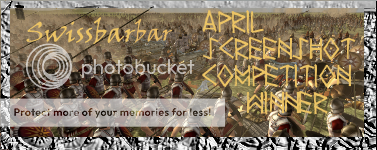But when they have selected the number prescribed,—which is four thousand two hundred infantry for each legion, or at times of special danger five thousand,—they next used to pass men for the cavalry...and they enrol three hundred for each legion...
The division is made in such proportions that the senior men, called Triarii, should number six hundred, the Principes twelve hundred, the Hastati twelve hundred, and that all the rest as the youngest should be reckoned among the Velites...
The Principes, Hastati, and Triarii, each elect ten centurions according to merit, and then a second ten each. All these sixty have the title of centurion alike,...Next, in conjunction with the centurions, they divide the several orders (omitting the Velites) into ten companies each, and appoint to each company two centurions and two optiones;..


 - Proud Horseman of the Presence
- Proud Horseman of the Presence 

 Reply With Quote
Reply With Quote




 Proud Roman General
Proud Roman General 




 +
+ =
=



Bookmarks